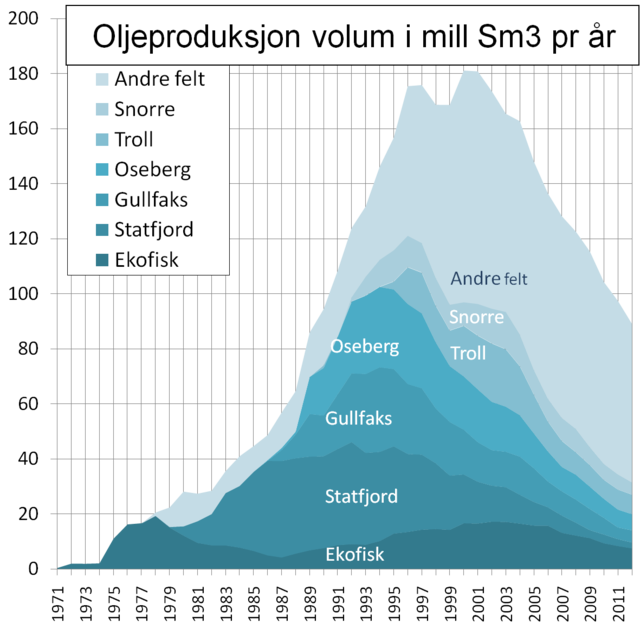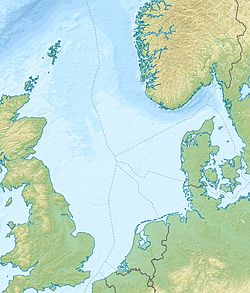Top Qs
Timeline
Chat
Perspective
Gullfaks oil field
Oil and gas field in the North Sea From Wikipedia, the free encyclopedia
Remove ads
Gullfaks is an oil and gas field in the Norwegian sector of the North Sea operated by Equinor. It was discovered in 1978, in block 34/10, at a water depth of 130-230 meters.[1] The initial recoverable reserve is 2.1 billion barrels (330×106 m3), and the remaining recoverable reserve in 2004 is 234 million barrels (37.2×106 m3). This oil field reached peak production in 2001 at 180,000 barrels per day (29,000 m3/d). It has satellite fields Gullfaks South, Rimfaks, Skinfaks and Gullveig.[2]

In November 2022, the Hywind Tampen floating offshore wind farm started supplying power to the Gullfaks platforms.[3]
Remove ads
Platforms
Summarize
Perspective
The project consists of three production platforms Gullfaks A (1986), Gullfaks B (1988), and Gullfaks C (1989).[1] Gullfaks C sits 217 metres (712 ft) below the waterline and the height of the total structure measured from the sea floor is 380 metres (1,250 ft),[4] making it taller than the Eiffel Tower. Gullfaks C holds the record [5] of the heaviest object that has ever been moved to another position, relative to the surface of the Earth with a total displacement between 1.4 and 1.5 million tons.[6] The platform produces 250,000 barrels per day (40,000 m3/d) of oil. The Tordis field, which is located 11 kilometres (6.8 mi) southeast of Gullfaks C, has a subsea separation manifold installed in 2007 which is tied-back to the existing Gullfaks infrastructure.[7][2]
Remove ads
Incidents
Between November 2009 and May 2010 a well being drilled from Gullfaks C experienced multiple well control incidents which were investigated by Petroleum Safety Authority Norway and summarized in a report released on 19 November 2010. The report stated that only chance prevented the final and most serious incident on 19 May 2010 from becoming a full-scale disaster. The report also questioned why the Statoil’s probe that was supposed to assess which barriers functioned "and thereby helped to prevent or limit the hazard" did not seem to have been assessed.[9]
On 29, April 2016, a helicopter carrying oil workers crashed while flying from the Gullfaks oil field to Bergen. All 13 people on board were killed.[10]
Remove ads
Geology
The reservoir consists of delta sandstones from the Middle Jurassic Brent Group, shallow-marine Lower Jurassic Cook Formation sandstones, and the fluvial-channel and delta-plain Lower Jurassic Statfjord Formation.[1]
See also
References
External links
Wikiwand - on
Seamless Wikipedia browsing. On steroids.
Remove ads


